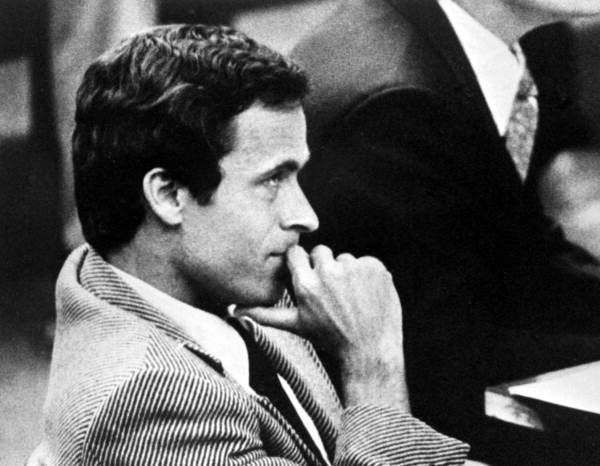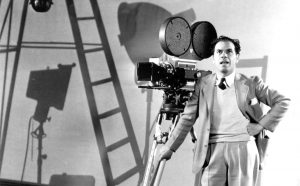Patrolman David Lee with the Pensacola Police Department was conducting his routine patrol in the early morning hours of February 15, 1978, when he just happened to cross paths with Theodore Bundy when he stopped him for a traffic violation. After a slight scuffle in which Bundy tried to flee, Lee managed to handcuff and secure him inside his vehicle. Bundy was quiet for most of the ride, and he knew his criminal adventures were finally over.1 After two successful escapes from jail, there was not going to be an opportunity for another.2
“I wish you had killed me.” He told Lee from the back of the car. “Would you kill me if I tried to run?”3
Before Bundy’s killing spree began, he attended the University of Washington, where he obtained a Bachelors degree and two years of law school.4 Based on the knowledge he gained in law school, Bundy insisted on being directly involved in conducting his defense in each of his trials, which is where his legal downward spiral began. During his sentencing trial, he attempted to connect with his jury and humanize himself by using carefully chosen Bible scripture. He wanted his largely southern jury to see him as comparable to Christ. He assured them that he was no Christ figure, but he urged them to remember how Christ had experienced an unjust trial and was subsequently executed on the basis of that unjust trial.5

As his final trial started to come to its inevitable end, Bundy did everything he could to postpone his execution date. He had multiple interviews with several different individuals; in each interview he would reveal something about himself that he would use to charm or manipulate his audience. One of these interviews led to an examination of evidence to see if Bundy was incompetent at the time of trial, which postponed his sentencing hearing. When a reporter questioned Bundy in an attempt to get him to admit to the thirty suspected murders, Bundy replied, “Put a zero after that.”6 Though we will never be certain on an exact number of murders that Bundy committed, it is without a doubt higher than the thirty that he officially confessed to.

Finally, on January 17, 1989, Bundy’s fourth and final death warrant was signed.7 It was at this point that he started confessing to multiple murders in an attempt to stave off his execution. After having been able to squeeze his way out of nearly every other situation he had managed to entangle himself in, he finally started to realize the inescapable reality, and the mask that he put on to keep the world from seeing him for what he really was, started to slip. He immediately began to look for his way out, trying to tug at the heartstrings of anyone who would listen. His last card to play was his interview with James Dobson.8

Dr. James Dobson is the founder of Focus on the Family, a Christian organization based in Colorado.9 At the time of Bundy’s interview, Dr. Dobson’s campaign was that pornography and violence were interrelated, and since Bundy was looking for a way to keep people talking about him, they were a match made in heaven. Throughout the interview, Dr. Dobson and Bundy were able to craft an entirely new story that thousands of people would believe. Bundy was able to portray himself as being corrupted by pornography from a young age, that pornography is what caused his violent behavior. Dr. Dobson had his perfect poster child. There was a question in the middle of the interview in which Dr. Dobson questioned Bundy about the murder of Kimberly Leach, and Bundy stated that he couldn’t talk about it.
“One of the final murders that you committed, … little Kimberly Leach, 12 years of age. I think the public outcry was greater there because an innocent child was taken from a playground. What did you feel after that? Was there normal emotions three days later? Where were you, Ted?” asked Dr. Dobson.

“I can’t really talk about that,” said Ted Bundy.
“That’s too painful,” Dr. Dobson interjected.
“I would like to be able to convey what that experience is like, but I can’t be able to talk about it,” said Ted Bundy.
“OK,” said Dr. Dobson.10
At this point, the camera caught Bundy’s quick glance at Dr. Dobson, clearly reading and carefully considering his next words. It was at this moment that Bundy’s eyes looked up at Dr. Dobson and in those few seconds his mask slipped, revealing the heartless murderer making his cold calculations on what his next move would be. The facade of the repented sinner that was corrupted by pornography that Bundy had been attempting to convey to us crumbled to reveal the truth, a psychopathic killer.

Throughout the entire forty-minute interview, he carefully chose his words in order to most effectively charm whatever audience he could manage to get his words to. This interview is where we get one of his most infamous quotes:
“And people need to recognize it’s not some kind of . . . those of us who are or who have been so much influenced by violence in the media, in particular, pornographic violence, are not some kind of inherent monsters. We are your sons and we are your husbands, and we grew up in regular families. And pornography can reach out and snatch a kid out of any house today. It snatched me out of my home 20, 30 years ago, and as dedicated as my parents were, and they were diligent in protecting their children and as good a Christian home as we had, and we had a wonderful Christian home, there is no protection against the kind of influences that are loose in society that tolerates. . . .”11
Ann Rule, a former co-worker and friend of Bundy, immediately recognized the interview for what it was: a final attempt to save himself, to blame someone other than himself for what he did.
“Dr. Dobson wanted someone to testify against booze and pornography, and Ted wanted to leave us all talking about him. He wanted to blame someone else for his crimes, and by saying it was us who left all those bad magazines on the racks, he became innocent in his own mind.”12

On January 24, 1989, Theodore Bundy died in the electric chair. As the white flag signaling his death was waved from the prison yard, cheers could be heard from the crowd gathered across the street. The chant “Burn, Bundy, burn!” paired with the banging of frying pans rang out in the early morning air.13
Dr. Dobson did not release the interview until after Bundy was executed. In a way, both of these men achieved their goal. Dr. Dobson had a real-life example of the dangers that pornography can have on a perfectly “normal human.” Bundy was able to keep people talking about him, his horrific murders, and what possible factors led him to commit those crimes. Several women viewed Dr. Dobson’s interview with Bundy and saw the compassion and remorse that Bundy was attempting to portray, while others were able to see through his last lie.14 Bundy went down in history for being one of the most cold blooded killers who will continue to be discussed for generations.
Though many people still protest Bundy’s execution, there is one thing we can all agree on: “He had an easier death than any of his victims.” 13
- George R. Dekle, The Last Murder: The Investigation, Prosecution, and Execution of Ted Bundy: The Investigation, Prosecution, and Execution of Ted Bundy (Santa Barbara, California: Praeger, 2011), 16. ↵
- Kristen Iversen, “When Death Came to Golden,” American Scholar 87, no. 2. (2018): 82. ↵
- George R. Dekle, The Last Murder: The Investigation, Prosecution, and Execution of Ted Bundy: The Investigation, Prosecution, and Execution of Ted Bundy (Santa Barbara, California: Praeger, 2011), 16. ↵
- George R. Dekle, The Last Murder: The Investigation, Prosecution, and Execution of Ted Bundy: The Investigation, Prosecution, and Execution of Ted Bundy (Santa Barbara, California: Praeger, 2011), 22. ↵
- George R. Dekle, The Last Murder: The Investigation, Prosecution, and Execution of Ted Bundy: The Investigation, Prosecution, and Execution of Ted Bundy (Santa Barbara, California: Praeger, 2011), 212. ↵
- George R. Dekle, The Last Murder: The Investigation, Prosecution, and Execution of Ted Bundy: The Investigation, Prosecution, and Execution of Ted Bundy (Santa Barbara, California: Praeger, 2011), 219. ↵
- George R. Dekle, The Last Murder: The Investigation, Prosecution, and Execution of Ted Bundy: The Investigation, Prosecution, and Execution of Ted Bundy (Santa Barbara, California: Praeger, 2011), 218. ↵
- Kristen Iversen, “When Death Came to Golden,” American Scholar 87, no. 2. (2018): 88. ↵
- Dr. James Dobson Steps Down as Focus on the Family Chairman (Colorado Springs, Colorado: Focus on the Family. February 27, 2009), https://www.focusonthefamily.com/about/newsroom/news-releases/20090227-dobson-steps-down-as-focus-chairman. ↵
- The Associated Press,”Bundy’s Last Interview; ‘I take full responsibility,'” The Palm Beach Post, January 29, 1989, 7-8. ↵
- The Associated Press,”Bundy’s Last Interview; ‘I take full responsibility,'” The Palm Beach Post, January 29, 1989, 7-8. ↵
- LAST BUNDY INTERVIEW CALLED `CON GAME,’ Salt Lake City, Utah: Deseret News. September 12, 1989. ↵
- Barry Bearak, “Bundy Electrocuted After Night of Weeping, Praying : 500 Cheer Death of Murderer,” Los Angeles Times, 24 Jan. 1989. ↵
- LAST BUNDY INTERVIEW CALLED `CON GAME,’ Salt Lake City, Utah: Deseret News. September 12, 1989. ↵
- Barry Bearak, “Bundy Electrocuted After Night of Weeping, Praying : 500 Cheer Death of Murderer,” Los Angeles Times, 24 Jan. 1989. ↵



125 comments
Martina Rodriguez
I’d like to premise this article with the fact that I had no idea that Ted Bundy’s name was actually “Theodre”. This is logical sense but I still didn’t make the connection. I liked how the second paragraph was set apart from the rest of the text, it really emphasized the impact of the question. I had never heard of the interviews but its saddening that it is suspected that he killed more than thirty people. While I’ve read a few articles about Bundy, I had no idea all the ways he tried to not get killed. Good use of a block quote.
Sienna Guerra
Before reading this article, I knew the name sounded familiar and all of a sudden I thought wait, Ted Bundy is widely known for his raping and killings of women. I loved how this article gave me as a reader a deeper insight and understanding of why Bundy acted this way! The end of this article surprised me with the fact that he was electrocuted and nothing else happened regarding him after in history.
Devin Ramos
This story was interesting to read because while I have heard of Ted Bundy I never knew what he did to get himself listed as one of the biggest psychopathic killers in the United States. The part I found most interesting was that he was in law school and then when he dropped and went to court he defended himself which is crazy to me because you are the lawyer and the suspect in this trial. What was also interesting to me is how Bundy would try and use interviews as a way to postpone his death sentence.
Laci
I’m shocked that Bundy was able to manipulate so many people to include our justice system. It’s disturbing that Dr. Dobson used his interviews with Bundy to further his cause. Great article!
Pamela Callahan
The story of Ted Bundy was very interesting to read, however, I found the end of the article to be somewhat disturbing. I know that he committed so many horrible crimes and killed so many people, but for some reason, it still seems wrong to celebrate and rejoice over someone’s death no matter how evil they may have been. I wish that nobody had to go through the pain and suffering of the families of Bundy’s victims.
Sarah
Very interesting. Bundy surely was devious
Kathleen Kendall
Portrayal of a man that became saturated with pornography and took his atrocious desires to the next level.
Jocelyn Moreno
I faintly recall hearing of Ted Bundy but I never knew he was a cold-heart murder! It’s so crazy how he tried to manipulate and convince people that he was the victim when he wasn’t. I’m glad Dr. Dobson didn’t release the interview until after he was dead. Such an interesting article!
Steven Hale
TV shows and movies about crime, such as on Law and Order, like to use the evil genius archetype, and I can think of a couple examples where these brilliant criminals represent themselves in court. But this article is the first I have seen of real-life person actually doing so. I am sure the “add a zero” comment was theatrical, but I am a little curious about his other victims, the ones he did not confess to killing, and if there is a way to bring their families any closure.
Engelbert Madrid
This long descriptive article was fascinating to read on how a criminal used language as a form to influence the jury and the public that he is innocent in other ways. One of Bundy’s techniques was to compare his trial as the one that Jesus had in order to say that Jesus and him were not treated justly. Also, he blamed pornography for destroying his childhood and his future life.